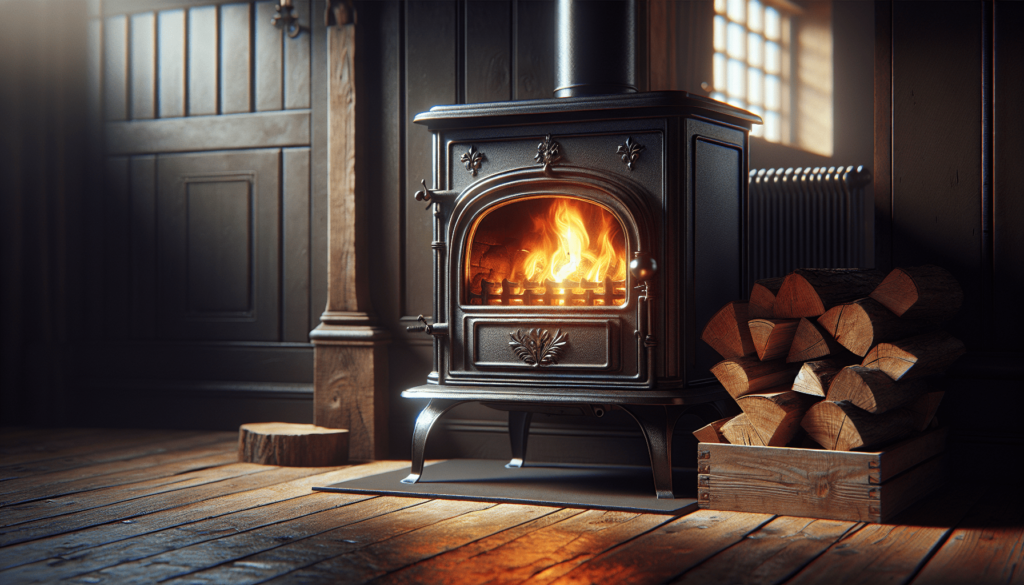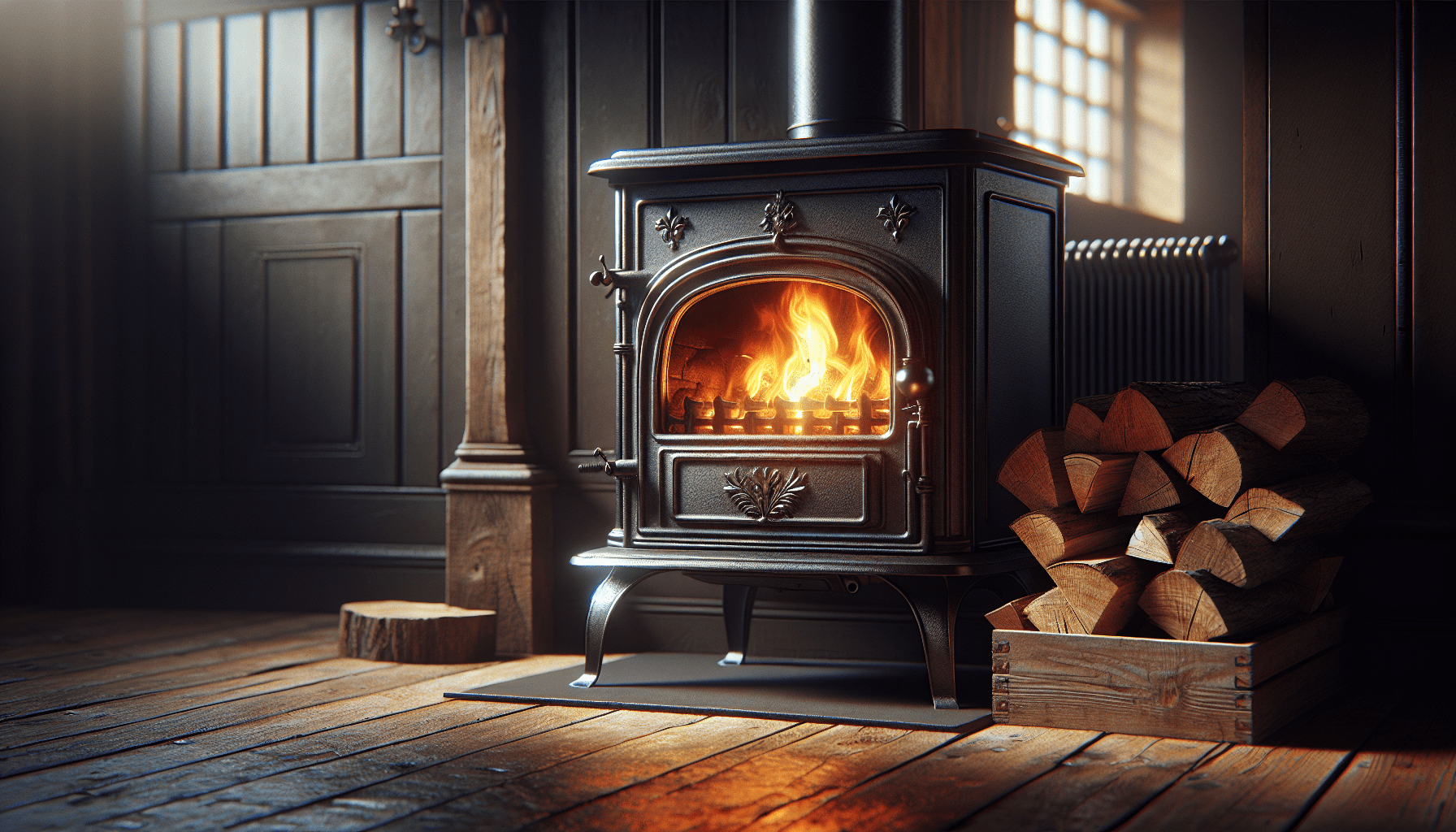When I decided to install a wood burner in my home, I knew it would involve more than just picking out the perfect stove. The process required thoughtful consideration of not just the style and size of the burner, but also the safety precautions and additional accessories needed to make it efficient and secure. From selecting the right type of wood to prepping the area with a proper hearth and flue system, there were several key elements I had to address to ensure everything was set up correctly. In “What Do You Need For A Wood Burner?”, I’ll walk you through these essential steps to help you create a cozy and safe environment for your home. What Do You Need For A Wood Burner?
So, you’re thinking about getting a wood burner? Perhaps, like me, you’ve romanticized the idea of a crackling fire on a cold winter evening, the scent of burning wood filling the room, and the mesmerizing dance of flames providing an ambient glow. But let’s be real: before you can start roasting chestnuts and telling ghost stories, there’s a bit more to consider than just picking out a cute stove. What exactly do you need for a wood burner?
A Burning Desire (And a Wood Burner, Of Course)
First things first: let’s talk about the star of the show—the wood burner itself. There are a variety of wood burners out there, each with distinct features and differences. Ladies and gentlemen, not all wood burners are created equal.
Types of Wood Burners
- Freestanding Stoves: These are the classic, stand-alone units you probably picture when you think of a wood burner. They can be placed almost anywhere and come in a plethora of designs and sizes.
- Inset or Insert Stoves: These are installed into an existing fireplace opening. They give a modern appearance and are often more efficient due to their sealed nature.
- Boiler Stoves: These are the multitaskers of the wood-burning world. They can be hooked up to your heating system to provide hot water and central heating.
- Pellet Stoves: While they technically burn wood, pellet stoves operate more like a small furnace. They burn compressed wood or biomass pellets.
Once you’ve picked your champion, you need to check a few things off your list.
Proper Ventilation: The Unsung Hero
Ventilation is crucial. If you get this wrong, you might end up with a smoke-filled room and a persistent cough, neither of which are very hygge. Let’s break down what you need to think about.
Chimney or Flue
Unless you’re into setting off all the smoke alarms in your house, you’ll need a proper chimney or flue.
- Existing Chimney: If you have a conventional chimney, you’re in luck. It can be lined to improve safety and efficiency.
- Flue: For those without a chimney, you can install a flue system. It might sound complicated, but hey, that’s why they invented installers.
| Type | Description |
|---|---|
| Traditional Chimney | Can be lined to improve efficiency. |
| Factory-built Flue | Often easier to install and can be more efficient. |
Draft Regulation
Draft regulation is also essential. Not enough draft, and your fire won’t burn effectively. Too much, and you’ll lose heat up the chimney. Think Goldilocks: it needs to be just right.

Fuel: Much Ado About Logs
Once your wood burner and ventilation are sorted, it’s time to fuel the fire. I’m not just talking about logs thrown together; this is a delicate art.
Types of Wood
Not all wood burns the same. Some woods are ideal for burning, while others… not so much.
- Hardwood: Oak, beech, and ash are excellent. They burn longer and hotter.
- Softwood: Pine, cedar, and spruce burn faster and produce more creosote—a black, tar-like substance that can gunk up your chimney.
Here’s a handy table for quick reference:
| Wood Type | Burning Qualities |
|---|---|
| Oak | Long-lasting, hot burn, slow to season. |
| Beech | Burns well, high heat output, seasons faster than oak. |
| Ash | Burns even when green, good heat. |
| Pine | Quick-burning, produces a lot of creosote. |
| Cedar | Quick to ignite, strong aroma, quick burn. |
Moisture Content
Seasoned wood is your best friend. Freshly chopped logs (known as green wood) have high moisture content and will be a smoky disaster.
- Seasoned Wood: Typically dried for 6 months to 2 years.
- Kiln-Dried Wood: Dried in a kiln and ready to burn with lower moisture content.
You’ll want wood with a moisture content of less than 20%. Anything higher, and you’re asking for trouble.
Tools and Accessories: Because You Can’t Just Wing It
Your wood burner isn’t a plug-and-play operation. You need some gear to make the magic happen. Here’s a list to get you started, broken down into must-haves and nice-to-haves.
Must-Haves
- Cord of Wood/Storage: A place to store your wood to keep it dry.
- Log Holder or Basket: To keep logs handy near the burner.
- Fire Starter: Matches, lighters, or even modern electric fire starters.
- Poker, Tongs, and Scoop: Essential for moving logs and maintaining the fire.
- Ash Bucket: To safely dispose of ashes.
Nice-to-Haves
- Companion Set: Often includes a brush, shovel, and other tools.
- Fire Guard: To prevent sparks from escaping (especially important if you have kids or pets).

Safety First: Otherwise, You’re Playing with Fire
A wood burner is basically a controlled bonfire inside your home. While that sounds gloriously primal, it also means you need to keep safety in mind.
Smoke and Carbon Monoxide Detectors
As much as you love that rustic wood-burning smell, inhaling smoke or carbon monoxide is a no-go.
- Smoke Detectors: Install them and check the batteries regularly.
- Carbon Monoxide Detectors: These are equally essential since CO is colorless and odorless.
Fire Extinguisher
Yes, it’s as obvious as it sounds, but you’d be surprised how easy it is to overlook.
Heat-Resistant Gloves
Handling hot stoves and logs can lead to burns. You don’t want to spend your romantic evening at the ER.
Ongoing Maintenance: Like Brushing Your Teeth, But for the Stove
Picture this: everything’s set up, and your evenings are filled with the warm glow of a perfect fire. Don’t get too comfortable. A wood burner requires ongoing TLC.
Cleaning the Stove
Regularly clear out the ash and clean the glass door (if your burner has one). This isn’t just for aesthetics; a dirty stove is less efficient.
Annual Inspections
Even if you’re a meticulous cleaner, professional inspections are a must. A yearly once-over can save you headaches (and potential hazards) down the line.
Chimney Sweeping
Ah, the chimney sweep—romanticized by Dick Van Dyke, but a critical part of stove ownership. Regular sweeping clears out creosote and other blockages that could cause fires.
Closing Thoughts
I’m not going to lie: setting up a wood burner is an investment of time, effort, and yes, cash. But once it’s up and running, there’s nothing quite like it. The ambiance, the warmth, and the satisfaction of tending to something as primordial as fire can be deeply rewarding.
So, what do you need for a wood burner? A fair bit more than you’d think initially, but isn’t that part of the journey? Whether it’s your evening pastime or the cornerstone of your home heating, having the right setup not only keeps you safe but also maximizes your enjoyment. Are you ready to embrace the glow?
From picking out the right wood to understanding proper ventilation, this guide takes you from novice to nearly an old pro. So go ahead, pour a cup of cocoa, grab a good book, and set your logs ablaze.

